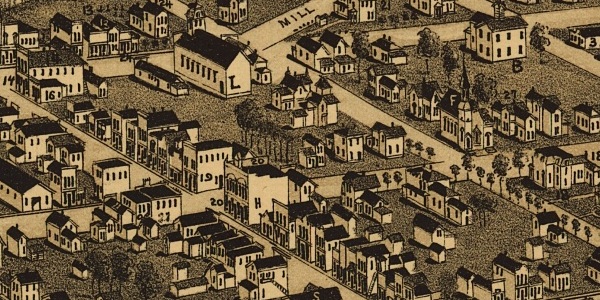![]()

Antigo is the county seat of Langlade County. It was a planned community, founded in 1878 by Francis A. Deleglise, who initially named his town Springbrook. Later, he changed the name to Antigo, which comes from the Chippewa Indian name for the river that flows through the area, "Nequi-Antigo-sebi" meaning "spring river" or "evergreen".More pictures of early Antigo:
As early as 1876, Deleglise had begun mapping out his town and laying out roads, Deleglise purchased the land which was to become Antigo from the U.S. government, then set about recruiting settlers, industries, churches, and business interests to come to Antigo.
In 1881, Deleglise convinced the Milwaukee Lakeshore and Western Railroad to come thru Antigo in its northward expansion by offering free land along the proposed tracks to rail officials. The railroad laid 23 miles of track, stretching from Aniwa to Summit Lake. The first train rolled in to Antigo on August 15, 1881. This proved to be the boon that his fledgling community needed. The Chicago and Northwestern Railroad took over the Milwaukee Lakeshore and Western in 1893, and from then on, the growth of Antigo and the railroad were intertwined.
Antigo gained its charter in 1883, and was incorporated as a city in 1885. By 1886, it had grown into a full-fledged town with a population of 2,500. It was around this time that the Jankowski's began immigrating to the United States and to the Antigo area. We know that Constantin and seven family members arrived in the US at the port of Baltimore on September 12, 1889. It is assumed they traveled immediately overland to Langlade County and the Antigo area.
According to Lena, Mike (Constantin's son) had arrived in America prior to this, possibly as early as 1886. The family eventually purchased land in the Rolling Township of Langlade County. In the early part of the 1900s, Antigo was best known for its sawmills. At the turn of the century, the city's economy had a good balance of industry and agriculture. High on the list were potatoes, dairy farms, fur, shoes, fertilizer, steel and aluminum products, along with the lumber and wood product industries established in the earlier years.